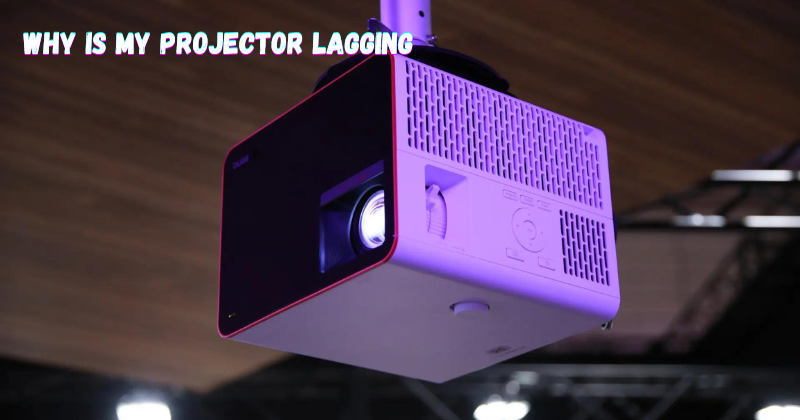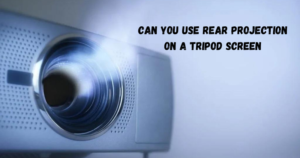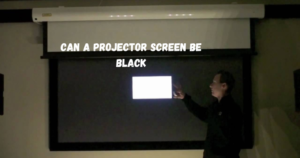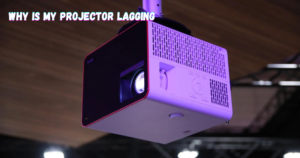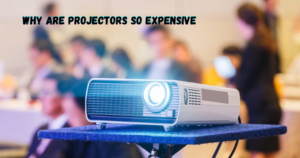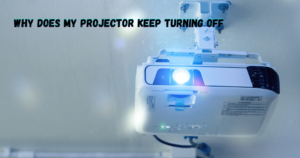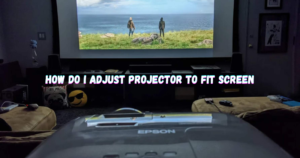If you’re experiencing lag with your projector, you’re not alone. Lag in projectors can be a frustrating issue that hampers the viewing experience and leaves you wondering why it’s happening. Projector lag, also known as input lag, is the delay between when a signal is sent to the projector and when the image actually appears on the screen. It can be particularly noticeable when you’re playing video games, watching fast-paced sports, or using the projector for presentations.
This delay can be caused by a variety of factors, including the projector’s processing speed, the quality of your video source, the connection type, and more. In this guide, we will explore the common reasons behind projector lag issues and offer tips and solutions to help you address this issue and enjoy smoother, more responsive projection.
Understanding Projector Lag
Before we dive into the causes and solutions for projector lag, it’s important to understand what exactly it is and how it affects your viewing experience. As mentioned earlier, projector lag is the delay between when a signal is sent to the projector and when the image actually appears on the screen.
This delay can range from a few milliseconds to several seconds, depending on various factors. Furthermore, lag can occur in both video and audio signals, resulting in a mismatch between the two. This can cause audio to be out of sync with the video, further affecting the overall viewing experience.
Reasons & Solutions Why Is My Projector Lagging
Here are some reasons for Input Lag in a Projector that might help you identify the source of your projector’s lag and address it effectively:
The Old Input Lag Regulation
In the past, input lag was relatively minor since most projectors were primarily used for presentations or displaying still images. As technology advanced and projectors became capable of supporting high-definition video and gaming, input lag became more noticeable and problematic. Older projectors may not have been designed with low input lag in mind, making them prone to delays when handling high-resolution content.
Solution:
If you’re using an older projector, consider upgrading to a newer model with better processing speed and optimized for high-resolution content.
The Speed of Signal Transfer
Another common reason for projector lag is the speed at which the signal is transferred from the source to the projector. Traditional connection types like VGA and HDMI can have slower transfer speeds compared to newer standards like DisplayPort and USB-C, resulting in higher input lag. Upgrading to a faster connection type can reduce lag and improve overall performance.
Solution:
Try connecting your projector to the source using a faster connection type. If the source device doesn’t support newer standards, consider upgrading it or using a signal converter for improved transfer speeds.
Slow Processor Speed
As mentioned earlier, the processing speed of your projector is a major factor in determining its overall performance. If your projector has an outdated processor or needs more memory, it may need help to keep up with high-resolution or fast-moving content, resulting in lag. This is particularly noticeable when playing video games or watching sports, where quick reactions and smooth motion are crucial.
Solution:
Consider upgrading your projector’s hardware, such as its processor and memory, to improve processing speed and reduce input lag. If upgrading is not an option, try adjusting the display settings on your source device to a lower resolution or frame rate that your projector can handle more easily.
Some Applications Will Have an Impact On Input Lag
Certain applications or settings on your projector can also contribute to input lag. For example, if you have any image processing features enabled, such as motion smoothing or noise reduction, it can add additional processing time and result in lag. Adjusting these settings or turning them off completely may help reduce input lag and improve overall performance.
Solution:
Check your projector’s manual or menu settings to see if any image processing features are enabled, and try turning them off to see if it makes a difference in input lag.
Low-Quality Video Source
The quality of your video source can also contribute to projector lag. If you’re using a low-quality DVD player or streaming device, it may not be capable of sending a high-quality signal to your projector. This can result in a delayed response and poor image quality. It’s always recommended to use high-quality video sources for the best viewing experience.
Solution:
Consider upgrading your video source to a higher-quality device that can handle high-resolution content and send a strong, stable signal to your projector.
Connection Type
The type of connection between your projector and video source can also affect lag. For example, using an HDMI cable instead of a VGA cable can significantly reduce lag as HDMI is capable of transmitting a higher-quality signal. Additionally, using a wireless connection may also introduce lag due to interference or signal disruption.
Solution:
Use a wired connection between your projector and video source for optimal performance. If using wireless is necessary, make sure both devices are connected to a strong, stable network with minimal interference.
Software and Firmware Updates
Software and firmware updates are essential for keeping your projector running smoothly and efficiently. Manufacturers often release updates that can improve processing speed, fix bugs, and enhance overall performance. Not staying up to date with these updates can lead to lag and other issues.
Solution:
Regularly check for software and firmware updates for your projector and install them as recommended by the manufacturer. This will help ensure your projector is running at its best and reduce input lag.
Tips for Reducing Projector Lag
Now that we’ve covered the common reasons behind projector lag let’s explore some tips and solutions for reducing or eliminating it:
Upgrade Your Projector
If you have an older projector and are experiencing significant input lag, consider upgrading to a newer model with better processing speed and optimized for high-resolution content. This may be the most effective solution for reducing lag and improving overall performance.
Use Faster Connection Types
As mentioned earlier, using faster connection types like DisplayPort or USB-C can significantly reduce input lag. If your source device supports these standards, try using them instead of traditional options like VGA or HDMI. Once the physical connection is established, turn on both the projector and the audio source.
Adjust Display Settings
If upgrading your source device or using a faster connection type is not an option, try adjusting the display settings on your source device. Display projector’s settings should also be checked. Lowering the resolution or frame rate can reduce processing demands and improve performance.
Turn Off Image Processing Features
As mentioned earlier, certain image processing features can contribute to input lag. Try turning them off or adjusting their settings to see if it makes a difference in performance.
Use High-Quality Video Sources
Using high-quality video sources is key for a smooth and responsive viewing experience. Consider upgrading your video source to one that can handle high-resolution content and send a strong, stable signal to your projector. If you notice audio delay than fix from the setting and enjoy high class audio quality. High input lag can be particularly noticeable when playing video games.
Keep Your Projector and Source Device Updated
Regularly check for software and firmware updates for both your projector and source device. This will ensure they are running at their best and can reduce input lag. The best way to improve your projector’s input lag is to reset it back to default settings.
Use a Wired Connection
Using a wired connection between your projector and video source is typically more reliable than wireless options, which can introduce lag due to interference or input signal disruption. Opt for a wired connection for optimal performance.
Consider Using a Gaming Projector
If you love to play video games and are particularly sensitive to input lag, consider investing in a gaming projector. These projectors are designed with high processing speeds and optimized for fast-moving content such as video games. After using these projectors your gaming performance issues resolve.
FAQs
What is input lag on a projector?
Input lag refers to the delay between when a signal is sent from your source device, such as a DVD player or gaming console, and when it appears on the projector’s screen. It can result in delayed responses and poor image quality.
How do I fix input lag?
There are a few potential solutions for fixing input lag on a projector, such as upgrading to a newer model with better processing speed, adjusting display settings, and using high-quality video sources. It’s also important to regularly check for software and firmware updates for both your projector and source device.
What are the different aspect ratios for projectors?
The most common aspect ratio for projectors is 16:9, which is the standard widescreen format. However, there are also other aspect ratios, such as 4:3 (standard) and 21:9 (ultra-wide). Aspect ratio manipulations are usually done in the projector settings or source device settings.
Are projectors OK for gaming?
Yes, projectors can be a great option for gaming. However, it’s important to consider factors such as input lag and the projector’s processing speed when selecting one for gaming purposes. Best gaming projectors can give you best immersive gaming experience if you invest in.
Conclusion
In conclusion, projector lag can be a vexing problem that detracts from the overall viewing or presentation experience. However, by identifying the root causes and implementing the appropriate solutions, you can significantly reduce or eliminate this issue. Whether it’s adjusting display settings, optimizing input sources, or investing in a projector with lower input lag, the key is to troubleshoot and fine-tune your setup.
With the right steps, you can enjoy a smoother, more responsive projection and get the most out of your projector for various applications. So go ahead and enjoy your projector without any lag! So, always remember to regularly check for updates and optimize your settings for the best performance. Happy projecting!
